Robert Mapplethorpe Calla Lily 1986 Gelatin silver print. 19 1/8 x 19 1/4 in. (48.6 x 48.9 cm). Signed, dated and numbered 8/10 in ink in the margin; signed, dated in ink and copyright credit reproduction limitation stamp on the reverse of the flush-mount.
Provenance Alan Koppel Gallery, Chicago Catalogue Essay Reading of Robert Mapplethorpe’s Flowers series requires that the series be understood in relation to, not against, his erotic nudes. Despite the seeming disparity in subject matter—and consequently, the potential arousal, be it positive or otherwise—the two bodies of work strongly resonate in their associations with life, mortality and perfection. Calla Lily, 1986, is a prime example of Mapplethorpe’s complicated relationship to flowers, a subject matter that he had conceded to enjoying viewing in photographs far more than assuming the responsibility of nursing in real life. Of this discrepancy Mapplethorpe has noted: “I’ll sort of force myself to photograph them before they die because I know I can get a good picture of them.” Hereby, Mapplethorpe (subconsciously or not) reveals his heightened awareness of mortality, and the fleeting existence of perfection, not unlike that of the Classical male nudes he so lovingly portrayed. For Mapplethorpe to have photographed the calla lily, one must remember, the flower had to be cut from its roots, therefore having its lifeline abruptly and irreversibly discontinued. To capture perfection, Mapplethorpe implied, we must first contain it, isolate it, and accept its imminent demise Nonetheless, the image is not moribund in nature, and at best ambiguous in its conjuration of sympathy and awe. After all, the flower is depicted in its prime; the idealized point of existence. Never before and never again, one could infer, will this flower look so beautiful. The notion of duality is extended to the sexualization of the flower, at once a firm and elongated stalk but also one that culminates in soft, undulating tissue. Moreover, the pistil, while not made prominent, is still visible. The flower’s gender is problematized, or rather, defamiliarized, requesting additional reading and asserting its symbolism, especially in conjunction with the gender ambiguity that Mapplethorpe extensively covered in his figural studies. Calla Lily, therefore, is a surrogate for Mapplethorpe’s nudes, equally seductive in its form, equally engaging in its ambiguity, and equally transient in its perfection. Read More Artist Bio Robert Mapplethorpe American • 1946 - 1989 After studying drawing, painting and sculpture at the Pratt Institute in the 1960s, Robert Mapplethorpe began experimenting with photography while living in the notorious Chelsea Hotel with Patti Smith Beginning with Polaroids, he soon moved on to a Hasselblad medium-format camera, which he used to explore aspects of life often only seen behind closed doors. By the 1980s Mapplethorpe's focus was predominantly in the studio, shooting portraits, flowers and nudes. His depiction of the human form in formal compositions reflects his love of classical sculpture and his groundbreaking marriage of those aesthetics with often challenging subject matter. Mapplethorpe's style is present regardless of subject matter — from erotic nudes to self-portraits and flowers — as he ceaselessly strove for what he called "perfection of form." View More Works
Robert Mapplethorpe Calla Lily 1986 Gelatin silver print. 19 1/8 x 19 1/4 in. (48.6 x 48.9 cm). Signed, dated and numbered 8/10 in ink in the margin; signed, dated in ink and copyright credit reproduction limitation stamp on the reverse of the flush-mount.
Provenance Alan Koppel Gallery, Chicago Catalogue Essay Reading of Robert Mapplethorpe’s Flowers series requires that the series be understood in relation to, not against, his erotic nudes. Despite the seeming disparity in subject matter—and consequently, the potential arousal, be it positive or otherwise—the two bodies of work strongly resonate in their associations with life, mortality and perfection. Calla Lily, 1986, is a prime example of Mapplethorpe’s complicated relationship to flowers, a subject matter that he had conceded to enjoying viewing in photographs far more than assuming the responsibility of nursing in real life. Of this discrepancy Mapplethorpe has noted: “I’ll sort of force myself to photograph them before they die because I know I can get a good picture of them.” Hereby, Mapplethorpe (subconsciously or not) reveals his heightened awareness of mortality, and the fleeting existence of perfection, not unlike that of the Classical male nudes he so lovingly portrayed. For Mapplethorpe to have photographed the calla lily, one must remember, the flower had to be cut from its roots, therefore having its lifeline abruptly and irreversibly discontinued. To capture perfection, Mapplethorpe implied, we must first contain it, isolate it, and accept its imminent demise Nonetheless, the image is not moribund in nature, and at best ambiguous in its conjuration of sympathy and awe. After all, the flower is depicted in its prime; the idealized point of existence. Never before and never again, one could infer, will this flower look so beautiful. The notion of duality is extended to the sexualization of the flower, at once a firm and elongated stalk but also one that culminates in soft, undulating tissue. Moreover, the pistil, while not made prominent, is still visible. The flower’s gender is problematized, or rather, defamiliarized, requesting additional reading and asserting its symbolism, especially in conjunction with the gender ambiguity that Mapplethorpe extensively covered in his figural studies. Calla Lily, therefore, is a surrogate for Mapplethorpe’s nudes, equally seductive in its form, equally engaging in its ambiguity, and equally transient in its perfection. Read More Artist Bio Robert Mapplethorpe American • 1946 - 1989 After studying drawing, painting and sculpture at the Pratt Institute in the 1960s, Robert Mapplethorpe began experimenting with photography while living in the notorious Chelsea Hotel with Patti Smith Beginning with Polaroids, he soon moved on to a Hasselblad medium-format camera, which he used to explore aspects of life often only seen behind closed doors. By the 1980s Mapplethorpe's focus was predominantly in the studio, shooting portraits, flowers and nudes. His depiction of the human form in formal compositions reflects his love of classical sculpture and his groundbreaking marriage of those aesthetics with often challenging subject matter. Mapplethorpe's style is present regardless of subject matter — from erotic nudes to self-portraits and flowers — as he ceaselessly strove for what he called "perfection of form." View More Works
.jpg)


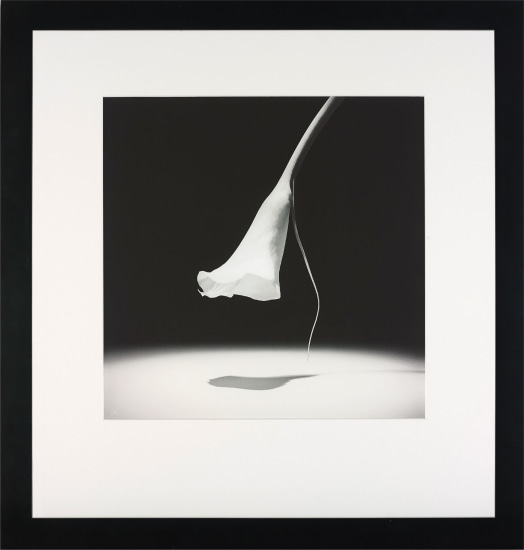

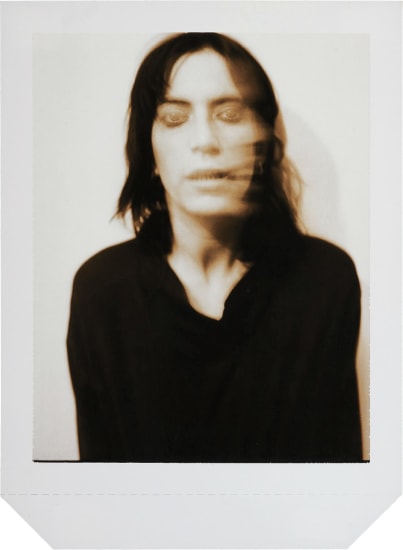
.jpg)
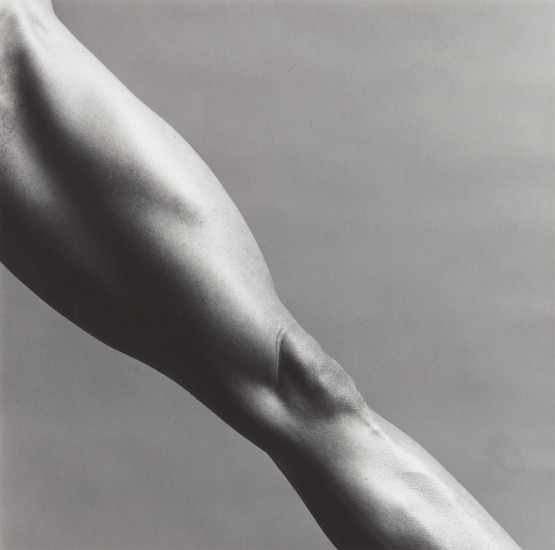
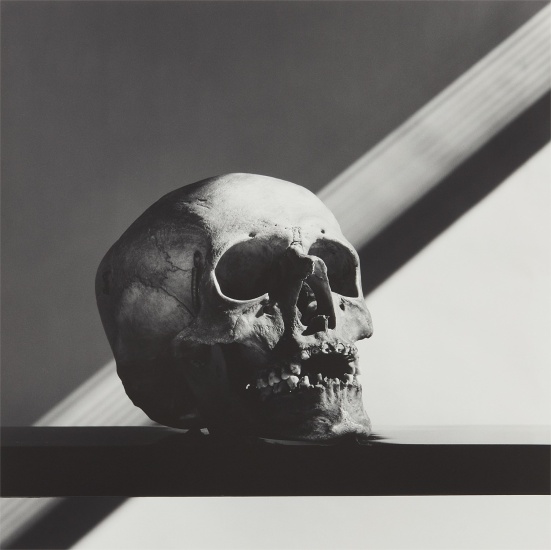
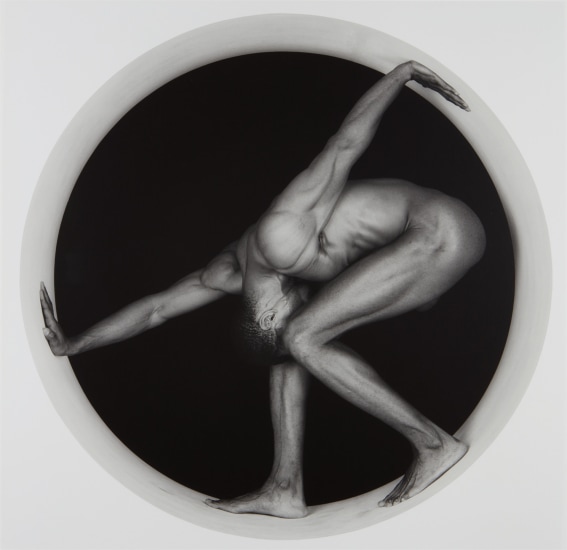



Try LotSearch and its premium features for 7 days - without any costs!
Be notified automatically about new items in upcoming auctions.
Create an alert